It may have achieved unprecedented popularity in the past few years but whatever you’ve heard, high-intensity interval training (HIIT) isn’t new. In 1912, Finnish athlete Hannes Kolehmainen used interval-style training in his preparation for the Olympics, and came away with three golds in the 5,000m, 10,000m and cross-country events. In 1952 Emil Zátopek, one of the most celebrated distance athletes of all time, won the Olympic marathon on a regime that included 400m interval sprints. And in the 1970s, Sebastian Coe’s father Peter used HIIT principles to create sessions of repeated 200m sprints that shaped his son into one of Britain’s best ever middle distance runners.
What’s changed since then is the science. You’ve probably heard of the Tabata regime – eight sets of 20 seconds’ high-intensity work with ten seconds of rest, based on a 1996 study by Professor Izumi Tabata – but that research is just the tip of the iceberg. In recent decades, there’s been a huge amount of research into exactly how different work-rest intervals, levels of intensity, and movements affect the results you get from HIIT.
And yet, when a lot of trainers explain it, the only description given is “hard work, short rests”. In short, there’s a better way to do HIIT.
HIGH ENERGY
First, it’s important to understand that while HIIT is an effective fat burner, it has a host of other benefits: upping your VO max (the amount of oxygen your body can use and an indicator of cardio fitness), reducing lactate accumulation (so you can train harder, for longer), and increasing enzyme activity to reduce fatigue. When you start, almost any format will work, but as you get better adapted to the workout method, tweaking your routine will help you focus on what you need to improve.
It starts with your body’s energy pathways. There are three: the ATP-PC, which fuels high-power, short-lived activities like explosive weightlifting or sprints; the glycolytic, which takes over for moderate-duration activities; and the oxidative, which is in control for anything beyond that. The first two are anaerobic, which means they don’t use oxygen, and the last is aerobic because it does. HIIT works both your aerobic and anaerobic systems, but how it works the different energy pathways depends on the work/rest ratios you’re using.
In a 2001 study, for instance, researchers found that the aerobic system’s contribution to energy rockets from 6% after ten seconds of exercise to 45% after 60 seconds. But the same happens during repeated sprints: in one Loughborough University study, the anaerobic systems provided all of a test subject’s energy for the first of ten six-second sprints (with a 30-second rest), but by the end they were supplying around 35%, with the rest coming from aerobic fitness.
What does that mean? Well, it means that 30 seconds’ rest isn’t enough to improve power, but the main takeaway should be that your workout doesn’t have to leave you in a pool of sweat on the floor (depending on your aim). A 2011 study published in the Journal Of Strength And Conditioning Research found that test subjects doing a “descending” sprint protocol, which was rated easier than an “ascending” protocol that used the same distances, experienced a higher rise in growth hormone and testosterone. Sometimes, it’s not about how exhausted you feel.
FEEL THE BURNOUT
If you’re feeling worn down in the first place, of course, HIIT isn’t the session to go for. “A common mistake with HIIT is the assumption that it trumps steady-state cardio at all times, which isn’t true,” says trainer David Jordan (thefittingrooms.com). “HIIT is highly effective because it requires less time and burns calories during recovery. However, to reap the benefits of HIIT you need to attack it with a lot of energy. On days when you’re feeling less than 100% or, more importantly, you’re sore from your previous workout and are at risk of pulling a muscle, then steady-state cardio is probably more effective – and safer.”
Finally, it’s important to consider how often you can do “real” HIIT. “It’s true that HIIT can trigger protein synthesis but it also causes protein breakdown,” says Jordan. “Doing several HIIT sessions a week would be catabolic so while you’d lose weight overall, some of that loss would be muscle mass. If building muscle is a goal, proper weight training still needs to be your primary focus with HIIT as a supplement. A training split of two weights sessions and two HIIT a sessions a week would keep you lean, while making sure you aren’t overtrained.”
Remember: it’s supposed to be short, intense and infrequent, not an everyday effort. Read on to find out how to structure your HIIT workouts.
01 FOCUS ON A GOAL
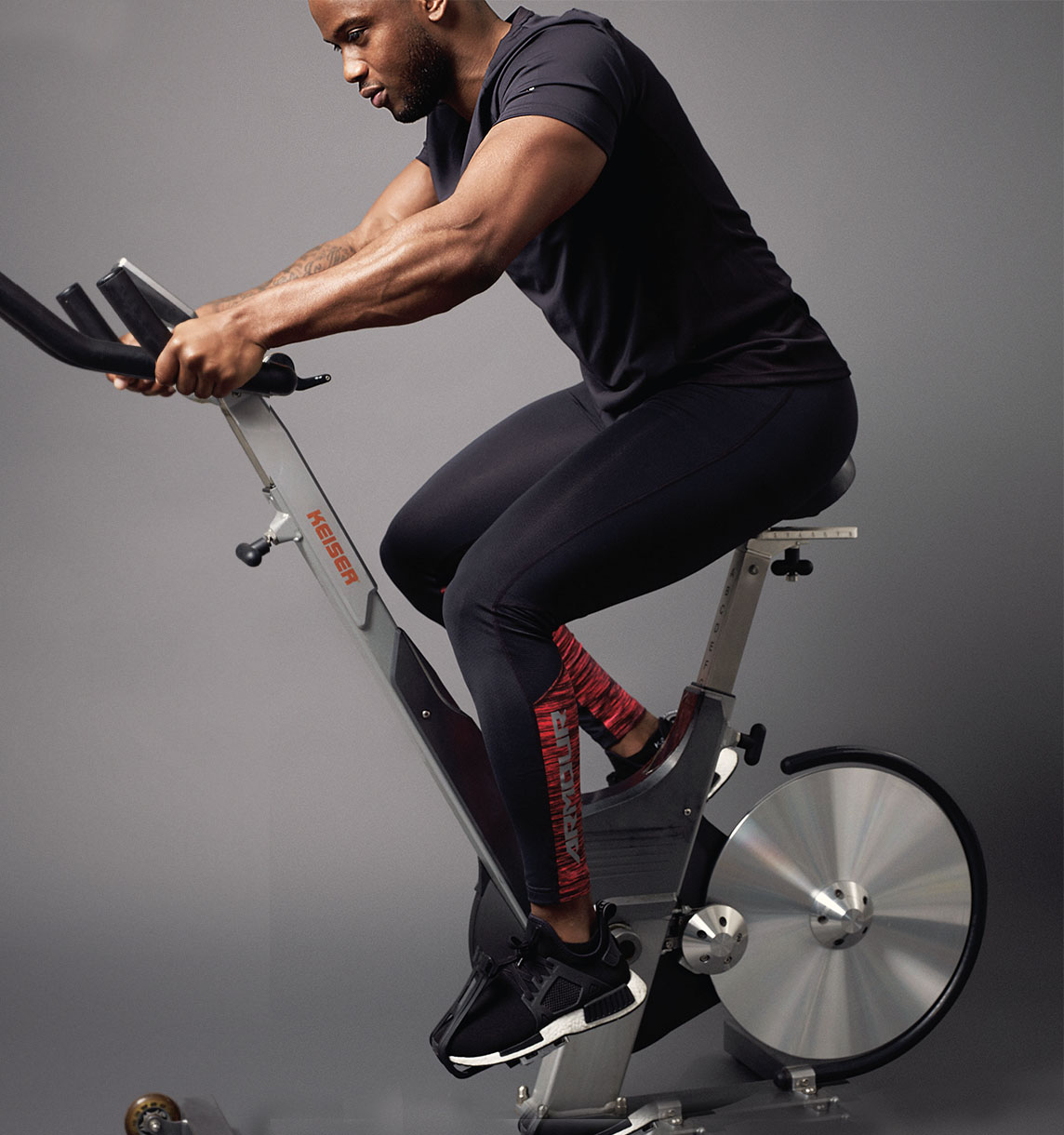
Decide on your main aim for the session: is it power production, fat loss or the ability to sustain endurance efforts at high intensity? “You need to choose a goal before you start, or you’ll end up in the middle ground, not achieving as much as you can,” says Philippe Ndongmo, a personal trainer at Dolphin Square Fitness Club in London.
02 KNOW THE VARIABLES
There are five: learn what they do, and crank the sliders accordingly
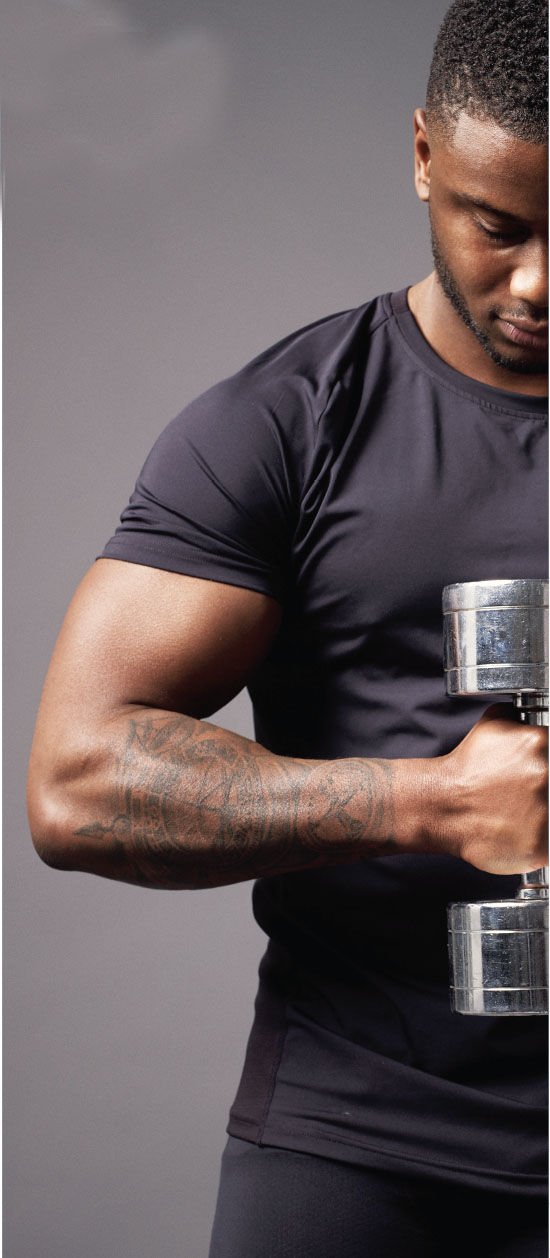
WORK DURATION
You can measure this in time under tension or reps. Either way, it’s dependent on your goals: shorter/harder is better for power; longer/more builds endurance.
REST DURATION
More rest builds power, less builds cardio. Minimal rest is best for fat loss, but you’ll compromise on intensity.
WORK INTENSITY
“You need to know your target heart rate or understand the rating of perceived exertion (RPE),” says Ndongmo. Rate the latter out of ten and try to keep the effort constant across every interval.
RECOVERY INTENSITY
Are you going to stop completely, or do “active” recovery like pedalling slowly on the bike? Sometimes, the latter can help to flush away lactate, which is something to think about when you’re choosing exercises.
VOLUME
It’s easy to do too much, which is when intensity drops. As a rule, start with low volume and go as hard as possible. When it feels easy, add a round or two. You’ll have to drop the RPE slightly.
03 CHOOSE YOUR WEAPONS
Some tools are better than others
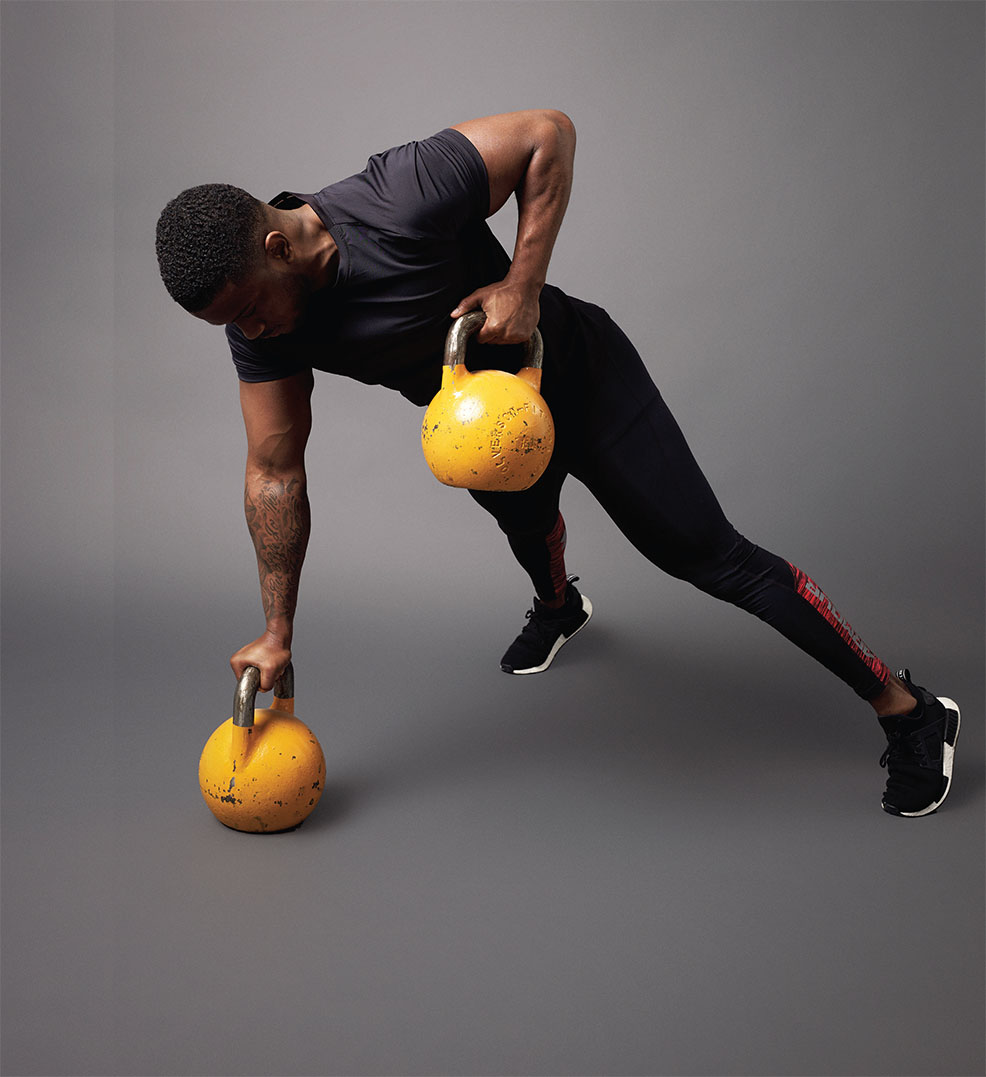
FOR CARDIO AND FAT LOSS
KETTLEBELLS
A Louisiana University study that compared kettlebell swings, cleans and deadlifts with a more traditional sprint training programme found that maximum heart rate was only slightly higher in the sprints, while calorie expenditure was bigger with the bells.
FOR ALL-OUT INTENSITY
BIKE
There’s a reason lots of studies use exercise bikes: going all-out on the pedals isn’t too technical, injury risk is low, and you can ruin yourself. For “supramaximal” efforts, which stimulate every available muscle fibre, the bike is the perfect choice.
FOR AN ALL-DAY BURN
BATTLE ROPES
In a College of New Jersey study, battle ropes beat 13 other exercises for energy expenditure, including burpees – and produced the highest average heart rate. The protocol: 15 seconds of single-arm waves, then 15 of double-arm waves, 60 seconds’ rest, repeated eight times.
FOR IMPROVED ENDURANCE
BURPEES
In the same New Jersey study, burpees beat four other bodyweight moves and every free weights exercise for VO response. If you’re short on time and space, use the Wingate protocol: 30 seconds all-out, then four minutes of rest, done four to six times.
04 PICK A PROTOCOL
Got an aim and staked out a corner of the gym for yourself? Go for it
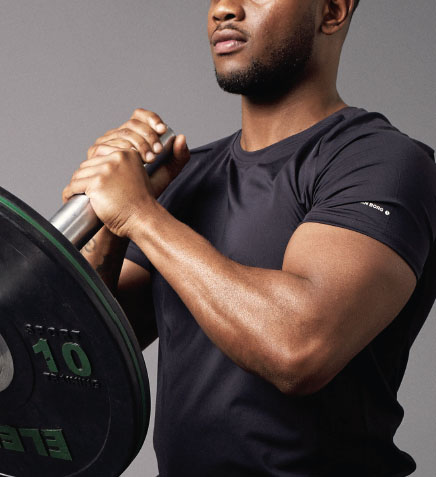
BEGINNER TIMMONS METHOD
Developed by a team at Loughborough University, this one’s entry level. Do 20 seconds of all-out work, followed by two minutes of active recovery (walking/freewheeling will do) or complete rest. Repeat three times, and you’re done.
INTERMEDIATE 10-20
Also known as “reverse Tabata”, this doubles the rest and reduces the work intervals to shift the focus to anaerobic fitness. Use it if you’re aiming for power production, or if you don’t have the fitness for an all-out Tabata. Warm up for ten minutes, then do six to eight rounds.
ADVANCED 10-20-30
Now things get complicated. In this plan, you’ll do five “blocks” of work, made up of 30 seconds at 30% intensity, 20 seconds at 60% and ten seconds all-out. Result? Lots of volume, at manageable intensity.
NASTY TABATA
The most famous HIIT protocol is ideal for increasing V0 max – as long as you do it right. Twenty seconds of all-out work, followed by ten seconds of rest, repeated eight times, improved endurance as much as 30 minutes of steady-state cardio in a Queen’s University study. The key is keeping intensity high – if you can talk during the session, you’re getting it wrong.
WORKOUT 1: SPRINT
“Production training” workouts improve your ability to put out maximum effort, with short rest. Ultra-short, super-hard exercise intervals combine with long rests for a workout that’ll improve your power: one for a 500m row PB or white-collar boxing bout.
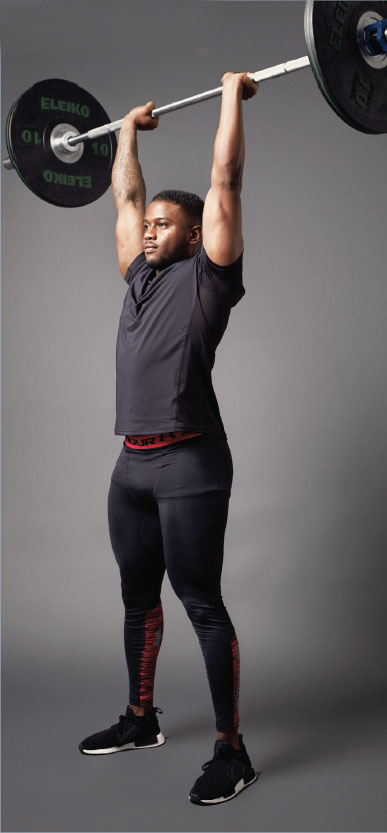
1 Mountain slider
Work 15sec
Rest 1min 30sec
Rounds 6
Start in a press-up position with your feet on a pair of small towels or Valslides, then bring one knee and then the other up to your chest as fast as possible. Think of it like a crawling sprint.
2 Thruster
Work 15sec
Rest 1min 15sec
Rounds 6
Holding a pair of dumbbells or a barbell at shoulder height, drop into a squat. As you stand up, drive the weight overhead, then lower straight into the next rep.
WORKOUT 2: SUSTAIN
“Maintenance training” workouts use longer work intervals and slightly shorter rests to increase your body’s ability to sustain exercise at high intensity, using both your aerobic and anaerobic systems. Use this one to improve your 5K time.
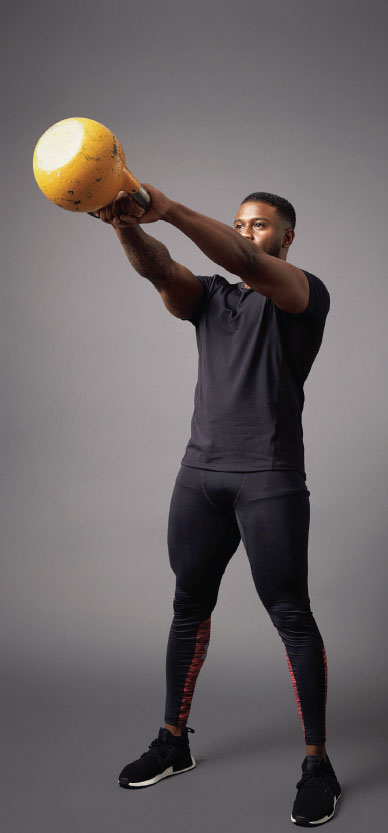
1 Kettlebell swing
Work 30sec
Rest 1min 30sec
Rounds 6
Using a moderate-weight kettlebell, swing it back between your legs and then pop your hips forward to swing it to eye level, letting it drop straight into the next rep.
2 Assault AirBike
Work 15sec
Rest 45sec
Rounds 10
The Assault AirBike forces you to use your full body for a short-butnasty experience. Haven’t got one? A regular exercise bike also works.
WORKOUT 3: STRIP
Shortening the rests and keeping the work rate high burns more calorie burn during and after your workout, for maximum fat loss. This session from Ndongmo will get you lean in your lunch break. Do all three exercises to complete one round, and repeat eight times.

1A Jump lunge
20sec
Explode off the ground and change legs in the air on each rep. Rest for ten seconds, then go straight into 1B.
1B High knees
20sec
Run on the spot, bringing your knees as high as possible. Keep the intensity high throughout, then rest for ten seconds.
1C Jump squat
20sec
Drop into a squat and then explode off the floor, landing as softly as possible. Rest for 30 seconds before you start the next round.